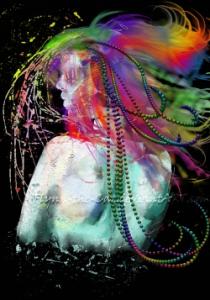With brush of music, on canvas of imagination.

Reads: 5688 times
Last topics on forum:
- Ogólnopolski SYLWESTER DARK INDEPENDENT w Krakowie - 2013-12-31
- Kraków (Rynek Główny 6) + Ogólnopolski SYLWESTER Dark Independent [ Electroperversion + Cold Gothic Night ] - 2012-12-19
- THE HUB-All Kinds of Dark Independent & Alternative 6.10.2012 sob Poznań - 2012-10-05
- The Hub v.4 - All Kinds of Alternative & Dark Independent Party- 08.09 (sob) Poznań - 2012-08-23
- THE HUB-All Kinds of Dark Independent & Alternative 7 lip sob Poznań - 2012-07-02
- THE HUB-All Kinds of Dark Independent & Alternative - nowy cykl imprez w Poznaniu - 2012-05-29
- Imprezy Dark Independent - wizje - 2010-06-15
- Kraków + 26.12.2009 + Dark Independent Night + Underworld - 2009-11-30
- I.E.M: HELLoween 2009 - ogólnopolska impreza dark independent w Poznaniu - 2009-09-16
- Kraków + 14.03.2009 + Dark Independent Night + Kartel - 2009-03-11
Since the beginning of art. (well, let’s say from the Middle Ages forward), musicians always tried to accentuate their individuality with their ‘clothes’. Many centuries had passed and yet the situation stays the same. The reason for this, I think, is the existence of the concept of competition. It’s not about astounding the audience with your music. That’s not enough. Never was. Listening to the music alone allows us to become infatuated with... just the music itself. Therefore, the musician would always stay in the shadow of his own works. In such situation, the pure factor deciding about popularity would be the musician’s talent (or the lack of it, for that matter). Not a bad deal, you have to admit. An artistic branch that would sort out by itself all the crap coming it’s way, leaving only the best. The problem is, that there would always be a few of the best (due to variety of musical tastes). Hence, whether they would like it or not, they would have to start to compete with one another. And artists always were keen on visual aesthetics.
Having that in mind, I think it’s quite safe to say, the it is impossible that a piece o music will be evaluated solely on basis of it’s purely musical value. Music cannot exist independently, without an artist behind it. That would a proof against such thing as competition. Therefore, it’s easy to conclude, that the way an artist is perceived by his audience influences how his music is received. And he is perceived not only through the prism of his own works, but also of many other thing, amongst which the image is the foremost.
Back in the past, it was quite simple. Some medieval minstrel could crush his rival’s career simple by means of a hat with a fancy feather or Italian moustache. A reputation of passionate lover also could come in handy. However, time moved on and the situation got bloody complicated. With the arrival of vinyl records, the musicians got yet another battlefield to wage their aesthetic wars. The record couldn’t be published as two, white, square sheets of paper blankly stating who’s playing, right? And then it began. Musicians started to add a visual side to their music.
And then came cassettes, followed up by CD. You could add a whole booklet instead of two square pages. However, the true battle began with the arrival of internet. A place, where the aesthetic battlefield isn’t bound by absolutely anything. Relatively recently, the internet itroduced the idea of social networks. So, we got MySpace, Facebook or whatever, adding to the complexity of the situation.
Right. I whined a bit, so that no one would think, that we, musicians, have easy lives. Nevertheless, I think that the issue at hand isn’t as terrible as some would think. For me, personally, music never existed in complete separation from visual arts. By simply listening to whatever you’re listening to, you can see absolutely anything. It’s all up to your imagination. So even without any material visual addition, you still connect sounds with images, by the sheer power of your mind. Eventually, it all comes down to the musician pointing us in the particular direction.
That would be god damn frustrating if it wasn’t for the fact, the music divided herself into a variety of genres. Hence, the listener can choose the approximate region of his imagination he wants to visit, while the artist will take him on a venture through that one chosen region.
Perfect, I dare say. In my opinion, while the whole situation is quite troublesome for musicians, it also gives them a unique opportunity. The audience becomes enabled to see some concept through the artist’s eyes, to feel what he felt, to understand his inspirations. Visual aesthetics are a perfect method to inesify the whole experience. The imagination reaches higher levels, when it’s stimulated from two sources simultaneously. And what’s the point of all art, it not the stimulation of imagination?
And for exactly that reason, I think that being a contemporary musician is something beyond composing and, optionally, live performance. It’s a lot more. It’s an ability to influence the imagination of your audience, not only with sound but through any means possible. Of course, this could lead to a situation, where it will be hard to separate musicians, painters/graphic designer and even writers. That would consequently lead to every artist being a dilettante. Having said that, someone who is good at anything, will never achieve perfection in any field. That’s why it’s important to remember, that a musical career is built on the foundation of musical skill. The visual arts should always remain an addition, not an equivalent element influencing the value of the whole product.
Eventually, I think there is no way the sound could be separated from image. And there’s nothing to whine about, because the whole situation can be used to the advantage of both the artist and his audience. You might say, that it makes a musicians life a lot hard. I would say, it’s an effort worth taking. Show me a person, who wouldn’t appreciate that effort and I’ll immediately stop being a musician and start to grow tatters. Because I believe that absolutely anyone, who wants to listen to music, expects something more than a series of sound arranged in a specific order and played in a certain rhytm. Without this belief, there isn’t any reason to make music.
Other articles:
Having that in mind, I think it’s quite safe to say, the it is impossible that a piece o music will be evaluated solely on basis of it’s purely musical value. Music cannot exist independently, without an artist behind it. That would a proof against such thing as competition. Therefore, it’s easy to conclude, that the way an artist is perceived by his audience influences how his music is received. And he is perceived not only through the prism of his own works, but also of many other thing, amongst which the image is the foremost.
Back in the past, it was quite simple. Some medieval minstrel could crush his rival’s career simple by means of a hat with a fancy feather or Italian moustache. A reputation of passionate lover also could come in handy. However, time moved on and the situation got bloody complicated. With the arrival of vinyl records, the musicians got yet another battlefield to wage their aesthetic wars. The record couldn’t be published as two, white, square sheets of paper blankly stating who’s playing, right? And then it began. Musicians started to add a visual side to their music.
And then came cassettes, followed up by CD. You could add a whole booklet instead of two square pages. However, the true battle began with the arrival of internet. A place, where the aesthetic battlefield isn’t bound by absolutely anything. Relatively recently, the internet itroduced the idea of social networks. So, we got MySpace, Facebook or whatever, adding to the complexity of the situation.
Right. I whined a bit, so that no one would think, that we, musicians, have easy lives. Nevertheless, I think that the issue at hand isn’t as terrible as some would think. For me, personally, music never existed in complete separation from visual arts. By simply listening to whatever you’re listening to, you can see absolutely anything. It’s all up to your imagination. So even without any material visual addition, you still connect sounds with images, by the sheer power of your mind. Eventually, it all comes down to the musician pointing us in the particular direction.
That would be god damn frustrating if it wasn’t for the fact, the music divided herself into a variety of genres. Hence, the listener can choose the approximate region of his imagination he wants to visit, while the artist will take him on a venture through that one chosen region.
Perfect, I dare say. In my opinion, while the whole situation is quite troublesome for musicians, it also gives them a unique opportunity. The audience becomes enabled to see some concept through the artist’s eyes, to feel what he felt, to understand his inspirations. Visual aesthetics are a perfect method to inesify the whole experience. The imagination reaches higher levels, when it’s stimulated from two sources simultaneously. And what’s the point of all art, it not the stimulation of imagination?
And for exactly that reason, I think that being a contemporary musician is something beyond composing and, optionally, live performance. It’s a lot more. It’s an ability to influence the imagination of your audience, not only with sound but through any means possible. Of course, this could lead to a situation, where it will be hard to separate musicians, painters/graphic designer and even writers. That would consequently lead to every artist being a dilettante. Having said that, someone who is good at anything, will never achieve perfection in any field. That’s why it’s important to remember, that a musical career is built on the foundation of musical skill. The visual arts should always remain an addition, not an equivalent element influencing the value of the whole product.
Eventually, I think there is no way the sound could be separated from image. And there’s nothing to whine about, because the whole situation can be used to the advantage of both the artist and his audience. You might say, that it makes a musicians life a lot hard. I would say, it’s an effort worth taking. Show me a person, who wouldn’t appreciate that effort and I’ll immediately stop being a musician and start to grow tatters. Because I believe that absolutely anyone, who wants to listen to music, expects something more than a series of sound arranged in a specific order and played in a certain rhytm. Without this belief, there isn’t any reason to make music.
Other articles:
- Music or fast food? Make your own choice - 2011-03-07 (Articles)
